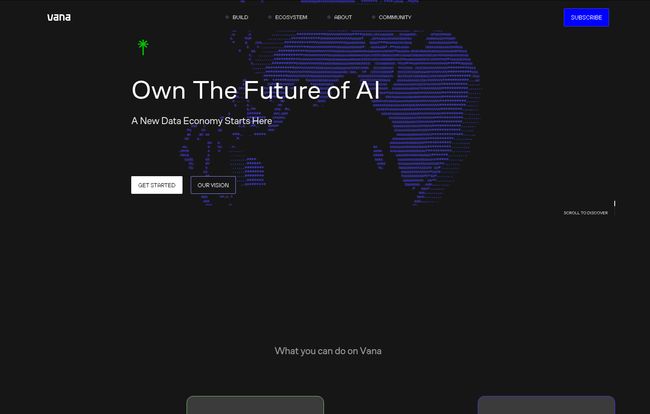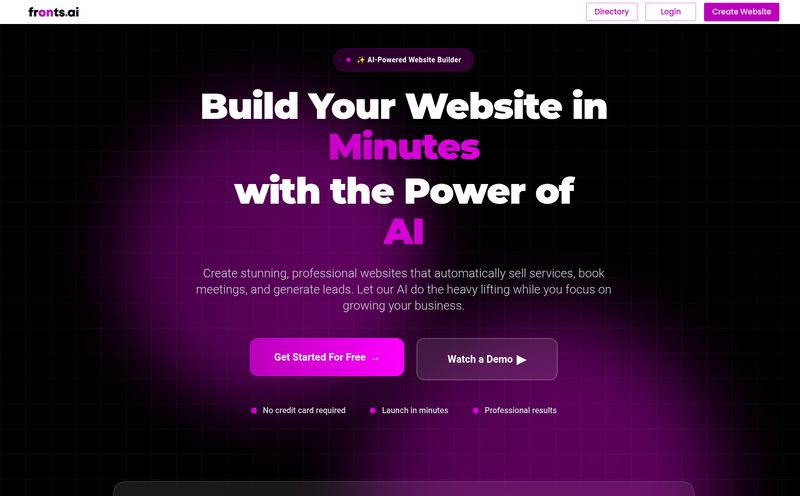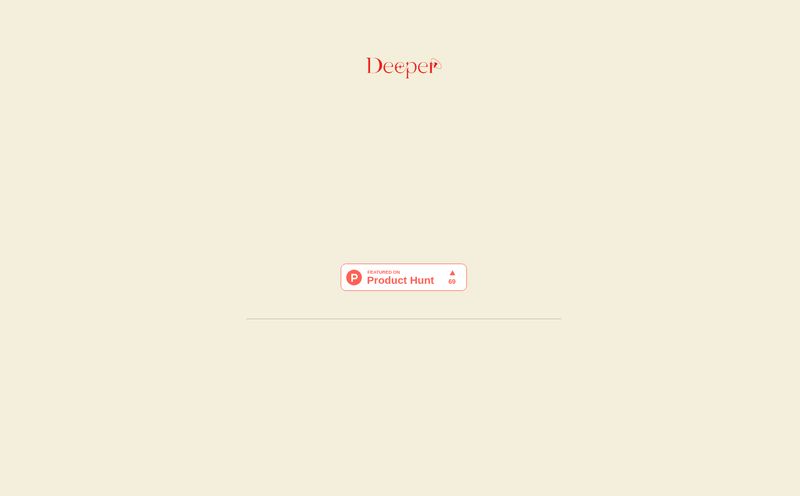We’ve all had that slightly creepy moment where you mention wanting a new pair of hiking boots to a friend, and suddenly every website you visit is plastering ads for Merrells and Salomons all over your screen. We know, on some level, that our data isn't really ours. It’s the currency we use to pay for “free” services from Google, Meta, and the rest of the gang. For years, we've just kind of... accepted it.
But with the AI explosion of the last couple of years, the stakes feel higher. Now, our data isn’t just being used to sell us stuff. It’s the very food that these massive, world-changing AI models are feasting on. We're providing the raw materials, and the big tech companies are building empires with them. A bit of a raw deal, no?
Every so often, though, a project pops up that makes you lean in a little closer. One that doesn’t just want to build a better mousetrap, but wants to give the mouse the blueprints. I stumbled upon Vana recently, and its tagline hit me: “In a world of AI, data is the new asset class.” Now that’s a thought. What if we weren’t just the product? What if we were the shareholders?
So, What is Vana, Really?
On the surface, Vana calls itself a network for user-owned data and decentralized AI. Okay, lots of buzzwords there. Let me try and break it down in a way that makes sense. Forget thinking of Vana as a single app or a piece of software. It’s more like a foundational layer for a new kind of internet. Think of it less like a supermarket where you buy things, and more like a community-owned food co-op. You don’t just consume; you contribute, you have a say in how it's run, and you share in the rewards.
The core idea is to flip the script on data ownership. Right now, your data is stored on company servers—it’s custodial. Vana’s network is designed to be non-custodial. Your data stays with you, in your control, kind of like having cash in your wallet versus in a bank. You decide who gets to access it and for what purpose.
The Big Ideas Behind Vana's Network
This isn't just about privacy. It's about building a whole new ecosystem. A few key concepts really drive this home.
Breaking Down the Walled Gardens
As an SEO, I live and breathe in the shadows of Google's walled garden. We all do. The best, most valuable data is locked away inside these massive corporate platforms. Vana’s pitch is to give developers and AI models access to rich, cross-platform data that isn’t controlled by a single entity. The catch? They have to get it directly from the users, who are incentivized to share it. It’s a bold move to create an open market for data, rather than a monopoly.
Data Liquidity Pools (DLPs): The Secret Sauce?
This is where it gets a little techy, but stick with me. A Data Liquidity Pool, or DLP, is one of Vana's core features. The best analogy I can think of is a community data potluck. Imagine a group of people all agreeing to pool their (anonymized) data about, say, their Spotify listening habits to train a new music recommendation AI. Everyone who contributes their data to the “pool” gets a stake in the AI model that’s created. If that AI model becomes valuable or is used by an app, the contributors—the data owners—get rewarded. It's a way to collectively bargain with our data, and I find that fascinating.
Turning Data into a Genuine Asset
The platform talks about trading “Data Tokens.” This is the mechanism that makes the potluck work. When you contribute to a DLP, you get a token back that represents your share. It’s like a digital receipt or a stock certificate for your contribution. This turns your data from a passive resource being extracted from you into an active asset you can own and from which you can potentially earn. Now that is a powerful concept.

Visit Vana
A Look Under the Hood: Vana's Key Features
Beyond the big ideas, the platform is built on a few key pillars. You've got the user-owned data part, which we've talked about—it's the whole point. This enables the decentralized AI, where models aren't owned by a single corporation but by the communities that contribute the data to build them. The whole thing runs on an open infrastructure, meaning its not a black box. It's open-source, and in theory, anyone can build on top of it. This is a huge departure from the closed, proprietary systems we’re used to. For developers, this means freedom. For users, it means transparency.
The Good, The Bad, and The Blockchain
No platform is perfect, especially one this ambitious. I'm an optimist, but I’m also a realist who's been in the tech industry long enough to see hype cycles come and go.
What I'm Genuinely Excited About
I have to say, the vision is compelling. Empowering users to actually own their digital identity is a conversation we need to be having. The incentive model is also clever. People are more likely to participate if they get something tangible in return. And for developers, the promise of accessing diverse, user-permissioned data could be a game-changer, allowing smaller players to compete with the giants. This could lead to a whole new generation of personalized apps that actually respect user privacy. Imagine that.
The Hurdles and Headaches
Okay, now for the dose of reality. Vana is built on blockchain technology. That means to really use it, you'll need to understand concepts like crypto wallets. That is a massive barrier for the average person. My parents can barely find the unmute button on Zoom; they're not about to start managing a non-custodial wallet. The platform is also very new, so adoption is still in its infancy. A network is only as powerful as its users, and it needs a lot of them. The reliance on community contributions is both a strength and a weakness—it's democratic, but it can also be slow and messy.
So, How Much Does Vana Cost?
This is where my investigation hit a funny, but telling, snag. I went looking for a pricing page, a standard for any service. And what did I find? A 404 error. Page not found.
The page you are looking for doesn’t exist or has been moved.
Honestly, I wasn't even mad. This tells me that Vana is still in a very early, pre-commercial stage. It's more of a public good or an open-source project right now than a polished product with pricing tiers. My guess is that the core network will remain free to use, with costs arising from specific applications or transactions built on top of it. For now, the price of admission is simply your curiosity and willingness to engage with a new, and admittedly complex, piece of technology.
Final Thoughts: Is Vana the Data Revolution We've Been Waiting For?
Is Vana going to get my mom to take control of her data tomorrow? Probably not. It's a platform built by pioneers, for pioneers. At least for now. The learning curve is steep, and the concepts are a world away from the plug-and-play simplicity of the apps we use every day.
But is it important? Absolutely. Vana, and projects like it, are asking the right questions. They're building the tools and laying the groundwork for a future where the balance of power is tipped back, just a little, toward the individual. It's a bit like the early days of the internet—clunky, niche, a bit weird, but brimming with potential. I'm not sure if Vana itself will be the final answer, but I'm damn sure it's part of the conversation that will lead us there. And for anyone who's felt like just a line of code in someone else's machine, that's a pretty exciting prospect.
Frequently Asked Questions about Vana
- What is Vana in simple terms?
- Vana is a network that lets you own and control your personal data. Instead of tech companies using it for free, you can pool it with others to build and own AI models, and get rewarded for your contributions.
- How do I actually own my data on Vana?
- Vana uses a non-custodial model, meaning your data is stored in a personal data wallet that only you can control. You grant access to applications, rather than handing your data over to them permanently.
- Do I need to understand crypto to use Vana?
- Currently, a basic understanding of blockchain concepts like digital wallets is necessary to fully engage with the network. This is a significant learning curve for many, but it's what enables the user-owned aspect of the platform.
- Is Vana mainly for developers or regular users?
- Right now, it's most appealing to developers, privacy advocates, and early adopters who are comfortable with new technology. The goal is for a wider audience to use apps built on Vana without needing to understand the complex tech underneath.
- What is a Data Liquidity Pool (DLP)?
- A DLP is a community-owned pool of data contributed by users to train a specific AI model. Contributors get a token representing their share of ownership in the resulting model and can earn from its use.
- Is Vana free to use?
- The core network and its open-source infrastructure are free to access and build upon. There is no public pricing information, suggesting that costs would be associated with specific applications or transactions on the network, not access to the network itself.
Reference and Sources
- Vana Official Website: https://vana.com



